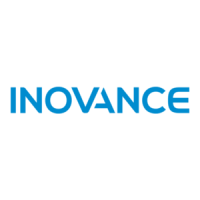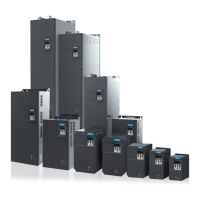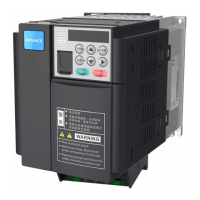Do you have a question about the Inovance MD500T110G-INT and is the answer not in the manual?
Essential information for avoiding safety hazards and risks.
Precautions for handling high voltages within the AC drive to prevent shock.
Table detailing electrical and performance specifications of MD500 models.
Comprehensive list of standard and individualized functions and their specifications.
Guidelines for upright mounting and required clearance for heat dissipation.
Step-by-step instructions for backplate and through-hole mounting.
Diagram illustrating a standard system configuration with the AC drive.
Details on terminal arrangements and recommended cable dimensions and torque.
Explanation of control circuit terminal functions and wiring diagrams.
Explanation of the LED operating panel's layout, keys, and indicators.
Step-by-step guide for initial AC drive setup and parameter configuration.
Available methods for controlling drive start and stop operations.
Methods for setting the drive's frequency reference using various sources.
Parameters and modes for starting and stopping the AC drive.
Procedures for optimizing drive performance by tuning motor parameters.
Functions for protecting the AC drive and motor from faults and damage.
Setup and usage of serial communication protocols like Modbus and CANopen.
Critical safety precautions to be followed during troubleshooting procedures.
Solutions for common problems encountered during initial drive testing.
Detailed table of fault codes, causes, and possible solutions.
Common symptoms and their potential causes and solutions.
| Model | MD500T110G-INT |
|---|---|
| Category | Controller |
| Power | 110 kW |
| Voltage | 380-480V |
| Output Current | 210 A |
| Frequency Range | 0-400 Hz |
| Cooling Method | Forced air cooling |
| Enclosure Rating | IP20 |
| Input Voltage | 380-480V |
| Control Mode | V/F control |
| Protection Features | Overvoltage, undervoltage, overcurrent, short circuit, overload, overheating |
| Communication Interface | RS485 |
| Ambient Temperature | -10 to 50°C |
| Storage Temperature | -20 to 60°C |
| Humidity | 5% to 95% (non-condensing) |
| Altitude | Up to 1000 m without derating |












